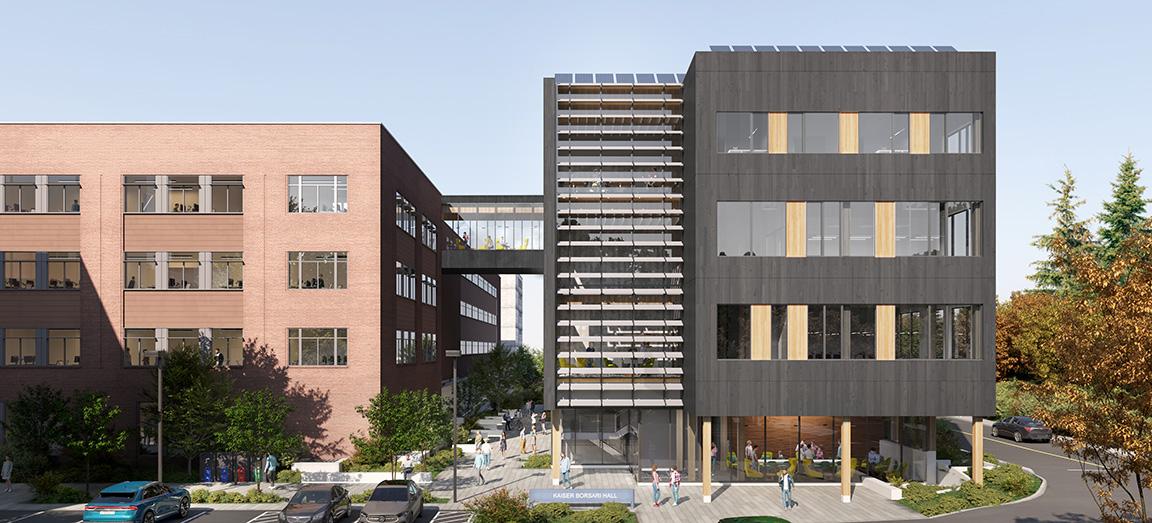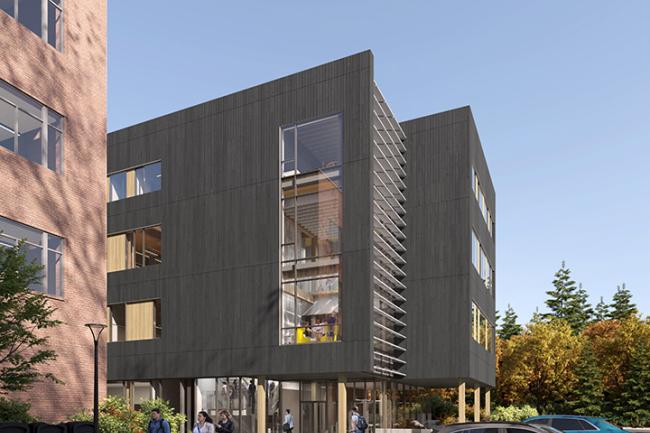
West elevation of Kaiser Borsari Hall, all renderings courtesy of Perkins&Will
Fostering Innovation
Imagine designing an experiment with a faculty mentor and then gathering real time data from the building where you’re working to test your hypothesis. Or working to find solutions for slowing climate change or mitigating its effects in a building designed to support those goals and demonstrate possible paths forward. Imagine collaborating with industry leaders to understand real world challenges as you hone your engineering or programming skills or craft energy policy for a better future.
Kaiser Borsari Hall, Western’s new electrical and computer engineering, energy science, and computer science building, will offer these unique opportunities to students across disciplines with its net zero energy and carbon design, state-of-the-art labs and experiential learning spaces, active learning classrooms, and collaboration spaces. When complete, the facility will be the first publicly funded zero-energy academic building on a university campus in Washington State.
Going Carbon Neutral
Construction on Kaiser Borsari Hall began March 20, 2023. The building is designed to exceed LEED standards for energy use, carbon, and other environmental indicators, and will pursue Living Building Challenge Energy Petal Certification through the International Living Future Institute. Solar panels on the roof will generate all its electrical power, and the building will use local, sustainably harvested wood that will look beautiful while reducing its embodied carbon footprint.
Surrounded by Western’s existing STEM programs and connected to the Communications Facility by a sky bridge, the building will increase collaboration opportunities and show what is possible in high performance design and building science. Connecting to an existing building met the program with less cost and less carbon impact, and the raised bridge allows for unobstructed insect and animal passage. The installation of the wood is durable and promotes circular design through material reuse.
When designating Western as one of the first cohort of twelve “Zero Energy Design Designation” awardees, Carolyn Snyder, deputy assistant secretary for Energy Efficiency with the U.S. Department of Energy said, “Our fight against climate change runs straight through our nation’s buildings, and the forward-looking college and university programs we honored today are paving the way for students to lead our net-zero greenhouse gas emissions future.”
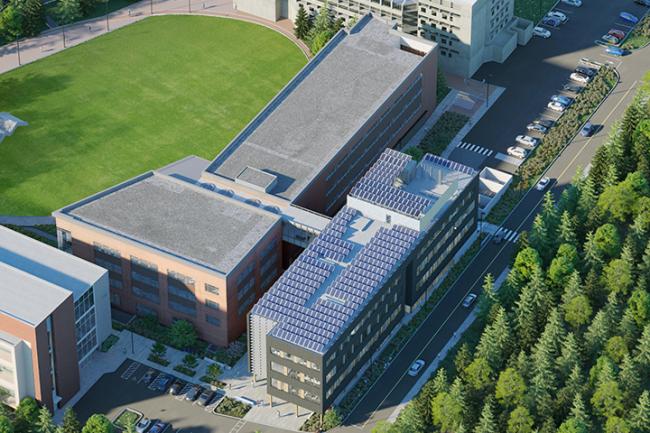
Aerial view with solar panels, showing connection to the Communications Facility
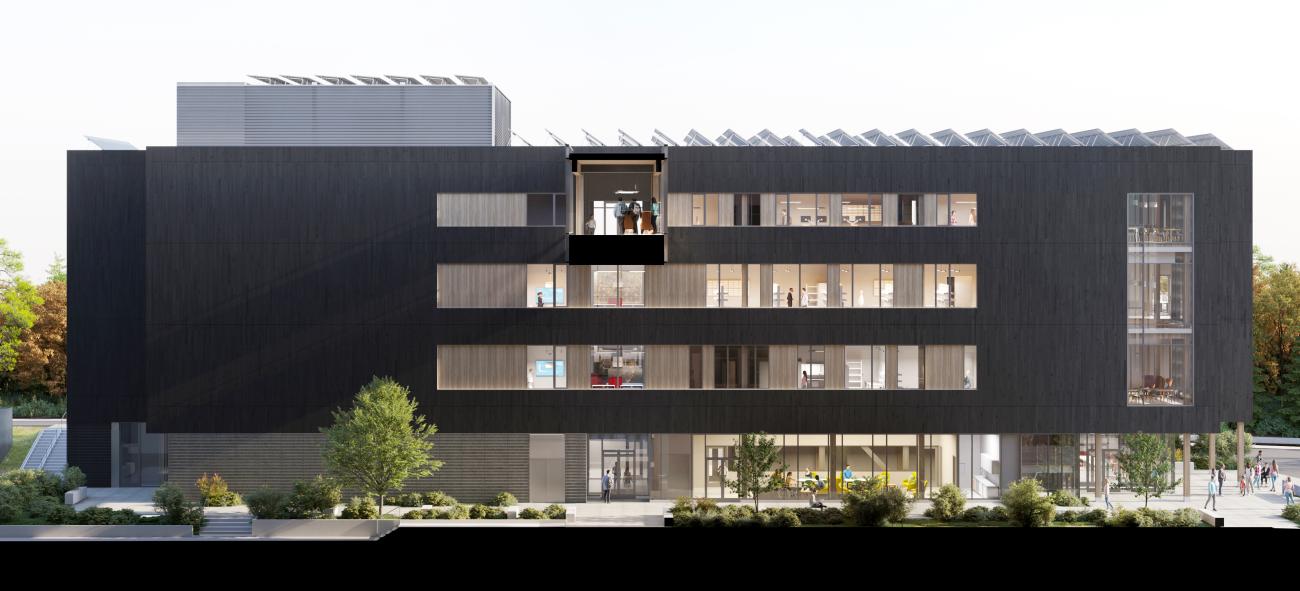
Long view showing Shou Sugi Ban wood siding and solar panels
The Road to Net Zero
Mass timber and Cross Laminated Timber Construction. Photovoltaic cells on the roof. Shou Sugi Ban wood siding. All electric mechanical system.
Pursuing both Zero Carbon and Zero Energy Certifications, this will be a “living laboratory” that integrates Electrical Engineering, Computer Science, and the Institute for Energy Studies into a shared facility where students learn from their own building about innovative materials and energy technologies. Energy use is reduced by 82% and solar panels cover over 75% of the roof area to maximize the energy potential on the site. With a mass timber structure, the embodied carbon is reduced by 63% while enhancing the biophilia experience of the occupants. The commitment to a healthy planet extends to water and native plant landscaping with a 78% reduction of outdoor water use.
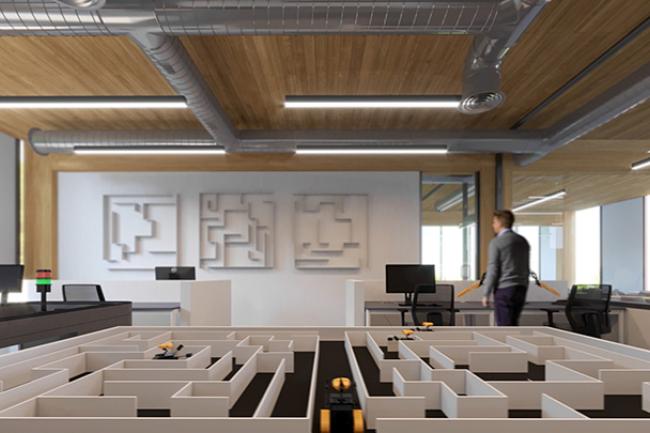
Specialized labs will increase capacity and create new opportunities.
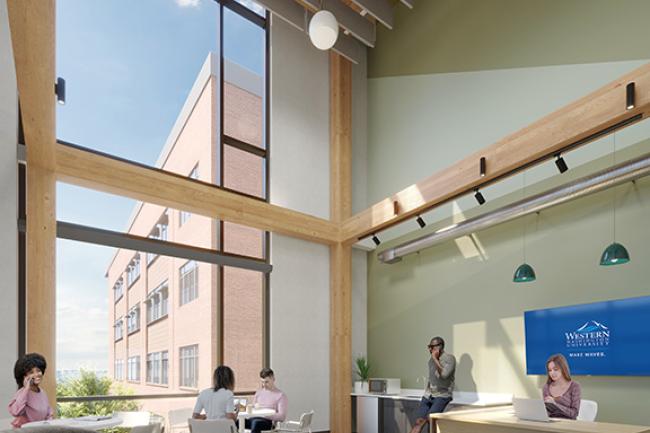
Student lounge will provide space for study and informal interactions.
Preparing More Problem Solvers
The building will house unique programs that expand access for an increasingly diverse population of students, including the nation’s only interdisciplinary undergraduate energy program. It will also house one of the most advanced electrical and computer engineering programs in the region, with faculty expertise in designing systems and controls for our smart, connected, and energy efficient future.
Housing electrical engineering, computer science, and energy science within a building that demonstrates a commitment to leadership in addressing climate change and energy challenges and uses cutting-edge technology to achieve its goals will provide tools to train and support future innovators and leaders in these fields.
Western is committed to providing more graduates in high demand fields. Western’s focus on small classes, interdisciplinary approaches, hands-on learning, and student participation in faculty-led research is a strategic advantage when it comes to preparing the next generation of innovators and problem-solvers. Western is also committed to inclusive success. We understand that more people of all cultures, backgrounds, and experience need to come together to solve problems. Diversity of perspective is key to shaping a sustainable future.
Connecting to Industry
Western’s new advanced technology engineering and computer science building is a direct response to the needs of Washington state industries and employers. The building will be a place for collaboration and connection with spaces that foster innovation, investigation, and inspiration. Physically and culturally accessible, it will be a hub where industry experts, faculty, and students come together to co-create the technology and engineering solutions for today and tomorrow.
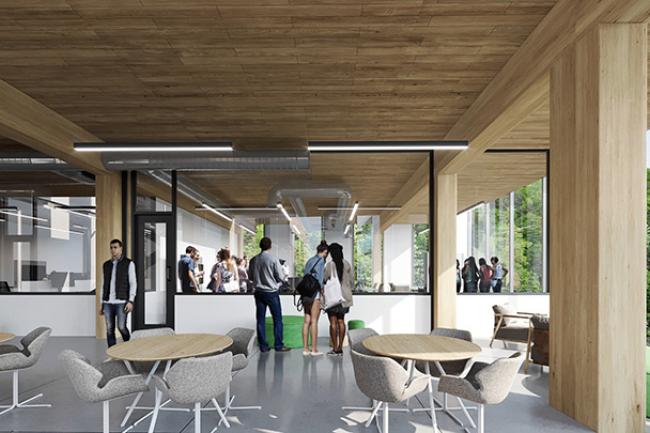
Collaboration and breakout space will be located near classrooms and labs
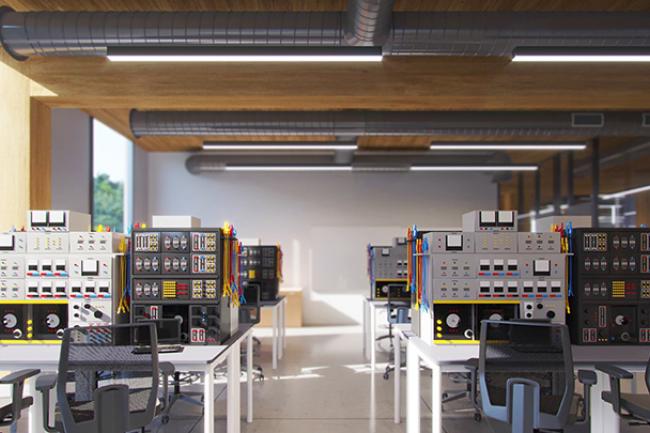
State of the art equipment will support learning and innovation.
Driving the Future
Smart buildings. Energy systems. Smart grids. Cyber security. Artificial intelligence. Autonomous vehicles. Mobile apps. Machine learning. These are the technologies shaping the future. Western is expanding ABET accredited Electrical and Computer Engineering, Computer Science, and Energy Science and Technology programs to tackle the most pressing technological challenges of our time. Together with industry partners, we are building dynamic and collaborative programs for applied education and research in advanced technology engineering.
More about Kaiser Borsari Hall
Kaiser Borsari Hall is being funded through both public and private funds and is named for Fred Kaiser and Grace Borsari, longtime friends and champions of Western, who have committed $10 million to the campaign to fund the project, alongside state appropriated funds. The architects are Perkins&Will, with design consulting by Jason McLennan, founder of the International Living Futures Institute. The General Contractor / Construction Manager is Mortenson Construction. Construction will continue through 2024, with completion expected early in 2025.
At approximately 54,000 square feet, it will provide state-of-the-art teaching spaces and experiential learning environments, along with teaching labs, learning research labs, active learning classrooms, collaborative space, and academic administrative space.
ENERGY
INCREASED CAPACITY to meet emerging needs in the energy industry through academic programs in business, economics, policy, and energy technology, science, and engineering
TECHNOLOGY
INCREASED CAPACITY to meet needs in the IT sector through academic programs in computer engineering, electrical engineering, and computer science
AEROSPACE
INCREASED CAPACITY to meet emerging needs in the aerospace industry through academic programs in engineering, manufacturing, and supply chain management
TRANSPORT
INCREASED CAPACITY to meet emerging needs in the transportation sector through academic programs in computer engineering, electrical engineering, and systems engineering
Contact Information
General information
Jonathan Higgins, Director of University Communications
Jonathan.Higgins@wwu.edu
University Advancement
Mark Brovak, Assistant Vice President for Advancement
Mark.Brovak@wwu.edu
Construction Information
Project Manager
Mark Nicasio, Project Manager Architect
Mark.Nicasio@wwu.edu
Construction impacts
Construction start: March 2023
Construction complete: January 2025

